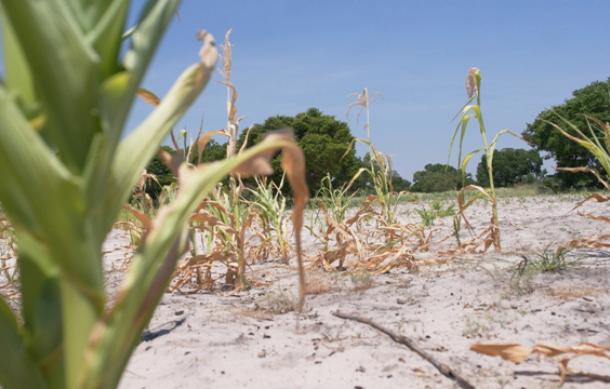
A severe drought is looming in the Otamanzi Constituency of the Omusati Region due to the poor rainfall received in the area this year.
The silos of many subsistence farmers are empty, and their only hope is drought-relief food for both humans and animals.
The devastating sight is evident as most mahangu crops have wilted, leaving no hope for any harvest in the area.
The crops have dried up at the infancy stage, leaving farmers distressed that all the money and efforts spent on production have gone to waste.
One of the hundreds of farmers left in limbo is Paulus Shifa from Okeendapa village, who says all hope of pulling through to the next rainfall season is solely pinned on the government's prompt intervention.
"I started ploughing this year. The rain was falling very well at the beginning, but as I can see now, it stopped around March. Now my mahangu wheat is dying up. We are really in harsh conditions. I don't know what we can do. Like me, who is an unemployed person, we expect the government to give us food so that we can survive."
In this part of the country, the majority of inhabitants, if not all, heavily rely on their crop fields to sustain themselves and their families.
For decades, they produced food for consumption, while the surplus was sold to generate revenue.
"In Okeendapa village, I am not the only one who encounters this circumstance; we have many houses that are sharing the same situation. We are not going to harvest this year, but at least the government should start giving us drought relief because we don't have food right now."
Constituency councillor Johannes Iiyambo says registration forms for drought relief have arrived and the process will soon start.
"We took note of the roaming drought in our constituency. The people are badly affected by this year's poor rainfall. The whole constituency will not harvest anything from their fields. This is a worse year for subsistence farmers."
Recently, the management of the Omusati, Oshana, and Oshikoto regions assessed the Etaka-Uuvudhiya water canal, which they want to renovate so that water can be pumped from Olushandja Dam.
The undertaking is set to resolve water scarcity for both animals and humans in remote rural areas as well as at cattle posts that are segregated.





